- Factors to consider when choosing a fruiting vine
- How to choose the right type of fruiting vine for your climate
- 1. Research your climate
- 2. Determine the sun exposure
- 3. Consider the soil type
- 4. Choose disease-resistant varieties
- 5. Consider pollination requirements
- 6. Consult local experts
- 7. Start with beginner-friendly varieties
- Popular fruiting vine varieties for different regions
- Eastern region
- Western region
- Southern region
- Tips for Evaluating the Health and Maturity of Fruiting Vine Plants
- 1. Inspect the Leaves and Stems
- 2. Examine the Root System
- 3. Assess the Overall Growth
- 4. Check for Pest Infestation
- 5. Look for Flower Buds or Fruits
- 6. Consider the Age of the Plant
- 7. Research the Plant Variety
- Considerations for spacing and trellising of fruiting vine plants
- 1. Spacing
- 2. Vertical trellising
- 3. Horizontal trellising
- 4. Training and pruning
- 5. Consider the plant’s growth habit
- How to maintain and care for fruiting vine plants
- Common pests and diseases that affect fruiting vines
- Pests
- Diseases
- Harvesting and enjoying the fruits of your labor
- Question-answer:
- What are some factors to consider when selecting a fruiting vine?
- What are some popular fruiting vines that are easy to grow for beginners?
- What are some fruiting vines that can thrive in a hot climate?
- What are some fruiting vines that can be grown in small spaces, such as a balcony or patio?
- What are some fruiting vines that produce fruit all year round?
- What are some fruiting vines that are resistant to pests and diseases?
- What are some fruiting vines that can be grown indoors?
- Video: How to Care Grape Vine for Fruiting
When it comes to selecting a fruiting vine for your garden, there are a few important factors to consider. Whether you have a small balcony or a large yard, choosing the right vine can have a big impact on your gardening experience. From grapes to berries and everything in between, the options are vast, so it’s vital to do your research before making a decision.
Start by evaluating your gardening space and climate: Think about how much sunlight your garden receives and the average temperatures throughout the year. Some fruiting vines require full sun, while others can tolerate partial shade. Similarly, certain vines thrive in cooler climates, while others need the heat.
Consider your desired fruit: Decide what type of fruit you would like to grow, whether it’s grapes, berries, or even kiwis. Each fruiting vine has its own unique requirements, so make sure you choose one that aligns with your preferences and capabilities.
Research the specific variety: Once you have narrowed down the type of fruiting vine you want to grow, take the time to research the various cultivars available. Some varieties may be more disease-resistant or produce larger fruits, while others may have a shorter growing season.
Ask for recommendations: Seek advice from local gardening experts, nurseries, or fellow gardeners in your area. They can offer valuable insights and recommendations based on their experience with different fruiting vines. Don’t hesitate to ask questions and gather as much information as possible.
Consider the long-term commitment: Fruiting vines require regular maintenance, including pruning, fertilizing, and pest control. Make sure you are willing to put in the necessary time and effort to care for your vine. It’s also important to consider the longevity of the vine and how it will fit into your long-term gardening plans.
Remember, selecting the perfect fruiting vine for next year is not a decision to be taken lightly. By considering your gardening space, desired fruit, specific variety, recommendations, and long-term commitment, you can ensure that you choose the vine that will flourish in your garden and provide you with delicious fruits for years to come.
Factors to consider when choosing a fruiting vine
When selecting a fruiting vine for your garden, there are several factors to consider. These factors will help you determine the best vine for your specific needs and conditions. Here are some important factors to keep in mind:
- Climate: The first and most important factor to consider is the climate in your area. Different fruiting vines have different temperature and moisture requirements, so it’s essential to choose a vine that is suitable for your specific climate. Some vines thrive in cooler climates, while others require hot and sunny conditions.
- Space: Consider how much space you have available for the fruiting vine. Some vines can grow quite large and may require trellis or support structures to grow properly. Make sure you choose a vine that can fit within the available space in your garden.
- Fruit type: Decide what type of fruit you want to grow. Fruiting vines can produce a wide variety of fruits, including grapes, berries, kiwis, and more. Consider your personal preferences and what fruits you enjoy the most when choosing a vine.
- Pest and disease resistance: Some fruiting vines are more resistant to pests and diseases than others. Research the specific vine you are interested in and find out if it is known for any pest or disease susceptibility. Choosing a vine that is naturally resistant to common pests and diseases can save you a lot of time and effort in the long run.
- Support requirements: Consider the support requirements of the fruiting vine. Some vines will need sturdy trellises or pergolas to grow and produce fruit properly. If you don’t have the necessary support structures in place, you will need to factor in the cost and effort required to install them.
- Maintenance: Different fruiting vines require different levels of maintenance. Some vines need regular pruning and training, while others are more low-maintenance. Consider how much time and effort you are willing to dedicate to the care of the vine when making your decision.
- Harvest time: Lastly, consider the harvest time of the fruiting vine. Some vines produce fruit early in the season, while others have a longer maturation period. If you have specific timing requirements or want a continuous harvest throughout the year, choose a vine that aligns with your desired harvest schedule.
By considering these factors and doing some research, you will be able to select the perfect fruiting vine for your garden that will thrive and provide you with delicious fruit for years to come.
How to choose the right type of fruiting vine for your climate
Growing fruiting vines can be a rewarding experience, but it’s important to choose the right type of vine for your climate. Here are some tips to help you select the perfect fruiting vine for your specific climate:
1. Research your climate
Before selecting a fruiting vine, it’s essential to understand the climate of your region. Consider the average temperature range, the amount of rainfall, and the length of the growing season. These factors will determine which types of fruits can thrive in your area.
2. Determine the sun exposure
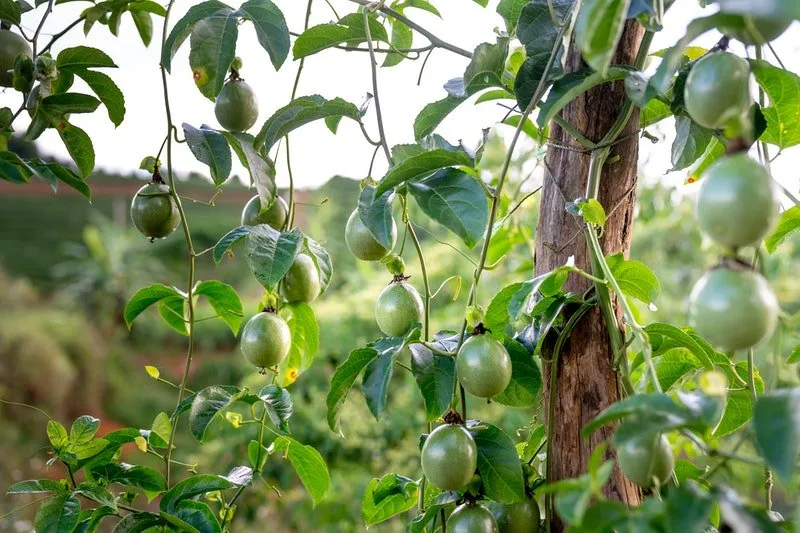
Fruiting vines typically require a good amount of sunlight to produce bountiful crops. Take note of the areas in your garden or yard that receive the most sun throughout the day. This will help you choose a vine that can thrive in those conditions.
3. Consider the soil type
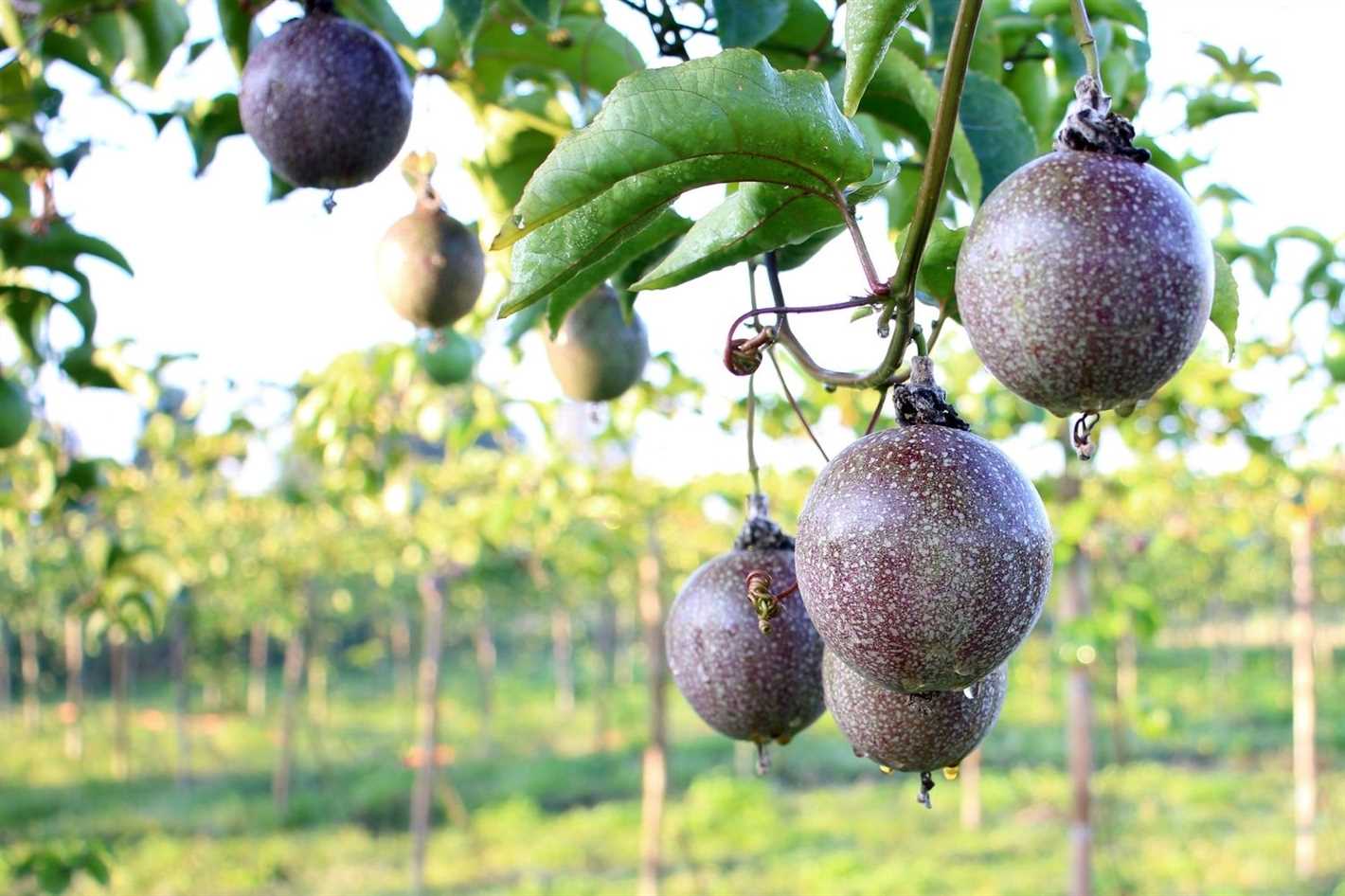
The type of soil in your garden can greatly impact the success of your fruiting vine. Some vines prefer well-draining soil, while others thrive in soil with higher moisture levels. Conduct a soil test to determine the pH level and nutrient content of your soil. This information will guide you in selecting a vine that matches the soil conditions.
4. Choose disease-resistant varieties
Some fruiting vines are more prone to certain diseases and pests than others. To ensure a healthy and productive vine, look for varieties that are resistant to common diseases in your area. This can help minimize the need for pesticides and other interventions.
5. Consider pollination requirements
Some fruiting vines require cross-pollination with another plant to produce fruit. If you have limited space or are planting in a small garden, make sure to choose a self-pollinating variety or ensure that you have enough space to plant multiple vines.
6. Consult local experts
Reach out to local gardening organizations, nurseries, or agricultural extension offices for advice on the best fruiting vine varieties for your climate. They will have valuable knowledge and experience specific to your area and can help you make an informed decision.
7. Start with beginner-friendly varieties
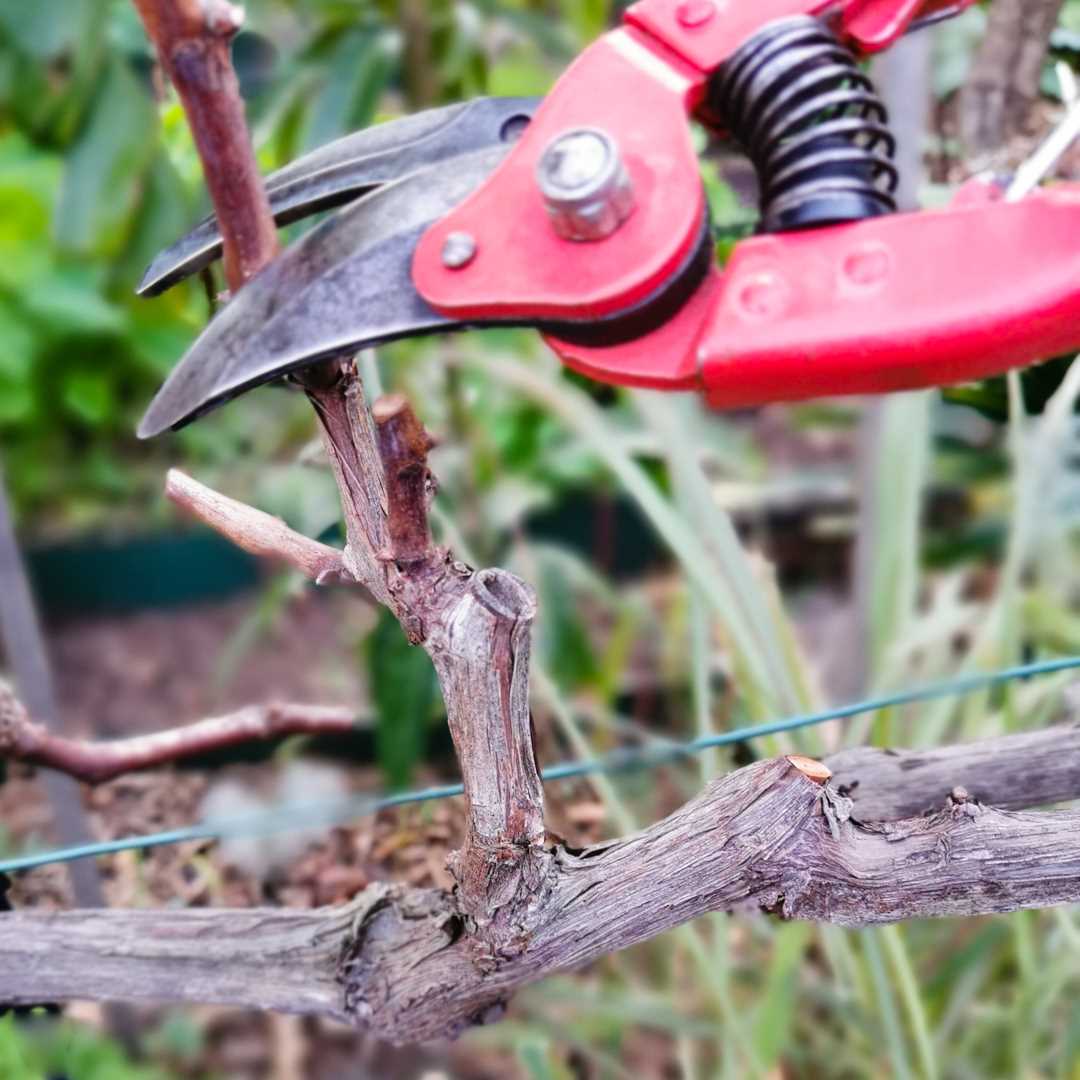
If you’re new to growing fruiting vines, it’s a good idea to start with beginner-friendly varieties that are known to be easier to grow. These varieties often have better tolerance for different climates and require less maintenance.
By considering your climate, sun exposure, soil type, disease resistance, pollination requirements, and seeking expert advice, you can choose the perfect fruiting vine for your climate. With proper care and attention, your vine will flourish and reward you with delicious fruits for years to come.
Popular fruiting vine varieties for different regions
When it comes to selecting the perfect fruiting vine for your region, it’s important to consider factors such as climate, soil conditions, and available space. Here are some popular fruiting vine varieties that thrive in different regions:
Eastern region
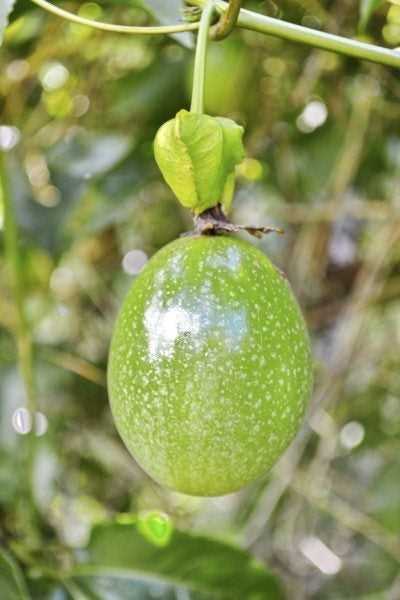
In the eastern region, where the climate is moderate and soil conditions are generally well-drained, some popular fruiting vine varieties include:
- Grapevines: Varieties such as Cabernet Sauvignon, Chardonnay, and Concord are known for their excellent fruit quality and adaptability to the region.
- Kiwifruit vines: Varieties like Hayward and Jenny are well-suited for the eastern region, providing tasty and nutritious fruits.
- Raspberry canes: Heritage, Caroline, and Prelude are some of the raspberry cane varieties that thrive in the eastern region, offering sweet and juicy berries.
Western region

The western region is known for its mild climate and rich soil, making it ideal for a variety of fruiting vine varieties, such as:
- Passionfruit vines: Varieties like Frederick, Panama Red, and Purple Possum perform well in the western region, producing delicious tangy fruits.
- Blueberry bushes: Highbush varieties, including Bluecrop, Duke, and Elliott, are well-suited for the western region, offering plump and flavorful blueberries.
- Kiwiberry vines: Actinidia arguta varieties, such as Issai and Ananasnaya, thrive in the western region, providing petite kiwi fruits with a sweet-tart flavor.
Southern region
The southern region often experiences colder winters, so it’s important to choose fruiting vine varieties that can withstand frost and cold temperatures. Some popular choices for the southern region include:
- Muscadine grapes: These grapes are native to the southern region and are well-adapted to the climate. Varieties like Carlos, Noble, and Fry produce sweet and flavorful grapes.
- Blackberry canes: Thornless varieties such as Apache, Arapaho, and Triple Crown are excellent options for the southern region, producing juicy blackberries.
- Fig trees: Varieties like Brown Turkey and Celeste are hardy and can endure cold temperatures, providing delicious figs.
Choosing the right fruiting vine variety for your region is essential for a successful harvest. Be sure to consider the specific climate, soil conditions, and available space in your area to ensure the best results.
Tips for Evaluating the Health and Maturity of Fruiting Vine Plants
When selecting a fruiting vine plant for your garden, it is important to evaluate its health and maturity to ensure that you choose a plant that will thrive and produce abundant fruit. Here are some tips to help you make the right choice:
1. Inspect the Leaves and Stems
Check the leaves and stems of the vine plant for any signs of disease, such as discoloration, spots, or wilting. Healthy leaves should be green and vibrant, while healthy stems should be sturdy and free of any damage.
2. Examine the Root System
Gently remove the plant from its container and examine the root system. Look for well-developed, white roots that are not tangled or circling around the pot. Avoid plants with root systems that are brown or rotting.
3. Assess the Overall Growth
Consider the overall growth of the vine plant. Look for a well-branched and compact plant that shows signs of vigorous growth. Avoid plants that appear weak or spindly, as they may struggle to produce abundant fruit.
4. Check for Pest Infestation
Inspect the plant for any signs of pest infestation, such as chewing damage or the presence of insects. Avoid plants that show signs of heavy pest infestation, as they may not be able to produce healthy fruit.
5. Look for Flower Buds or Fruits
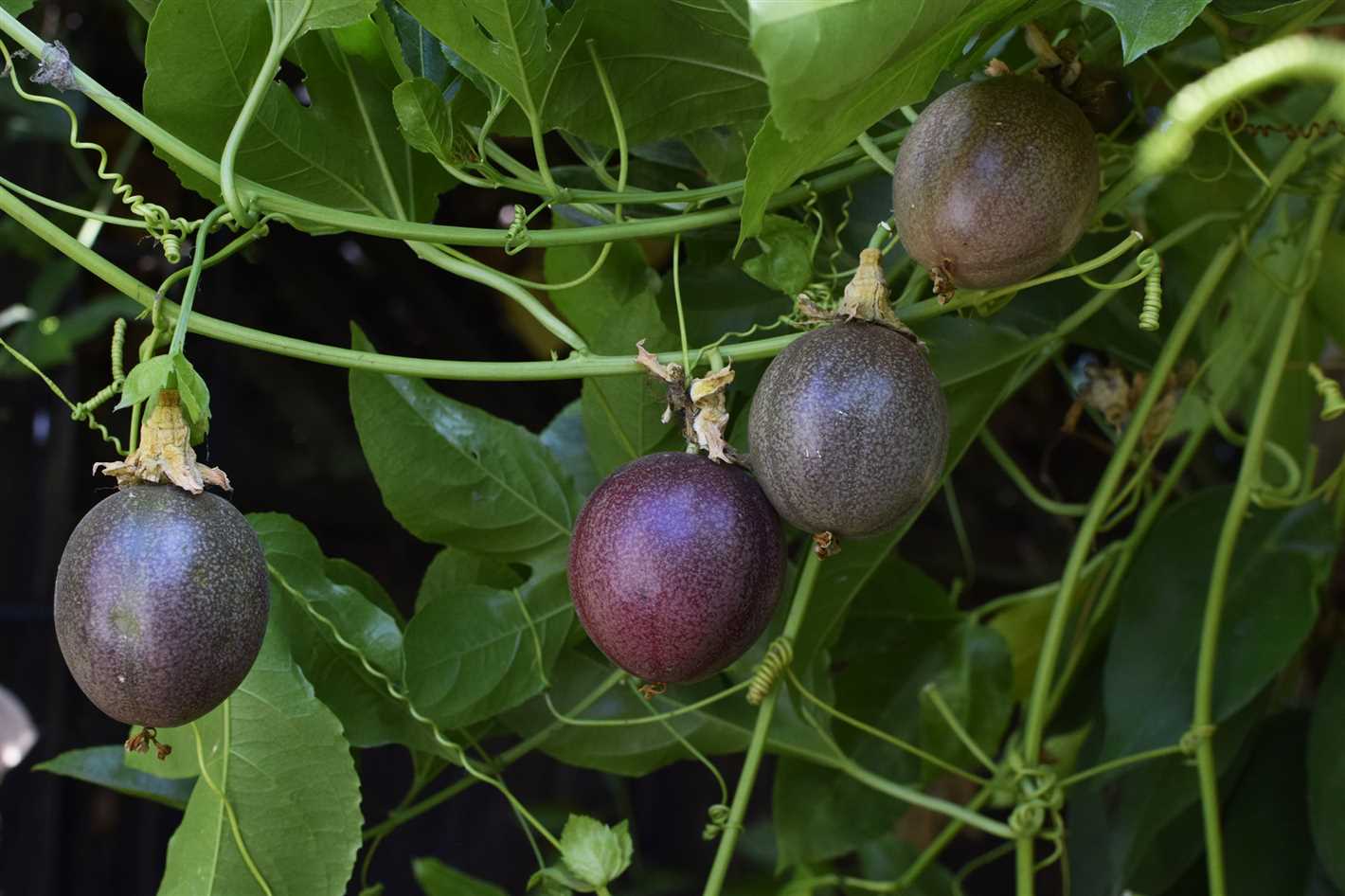
Check if the fruiting vine plant has any flower buds or small fruits. This indicates that the plant is mature enough to produce fruit in the coming season. Avoid plants that do not have any buds or fruits, as they may take longer to establish and bear fruit.
6. Consider the Age of the Plant
Take into account the age of the fruiting vine plant. Younger plants may take longer to establish and start producing fruit, while older plants may already have a well-established root system and be ready to produce fruit immediately. Choose a plant that fits your expectations and gardening goals.
7. Research the Plant Variety
Before making a final decision, research the specific variety of the fruiting vine plant you are considering. Different varieties have different growth habits, fruit flavors, and disease resistance. Choose a variety that is well-suited to your climate and desired fruit characteristics.
- Inspect the leaves and stems
- Examine the root system
- Assess the overall growth
- Check for pest infestation
- Look for flower buds or fruits
- Consider the age of the plant
- Research the plant variety
Considerations for spacing and trellising of fruiting vine plants
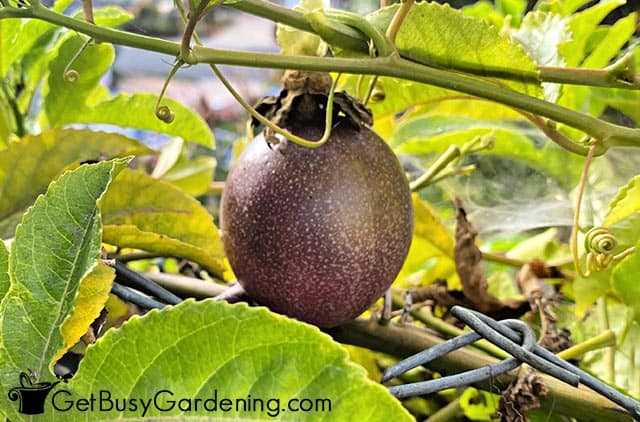
When selecting fruiting vine plants for your garden, it is important to consider their spacing requirements and the need for trellising. Proper spacing and trellising can help optimize growth, ensure good airflow, and facilitate easy harvesting of fruits. Here are some important considerations for spacing and trellising:
1. Spacing
When planting fruiting vine plants, it is essential to provide adequate space between each plant. This allows the plants to have enough room for root development and prevents overcrowding, which can lead to the spread of diseases and hinder fruit production. Consult the specific variety’s spacing requirements, usually found on the plant’s label or in gardening references, to determine the appropriate distance between plants.
2. Vertical trellising
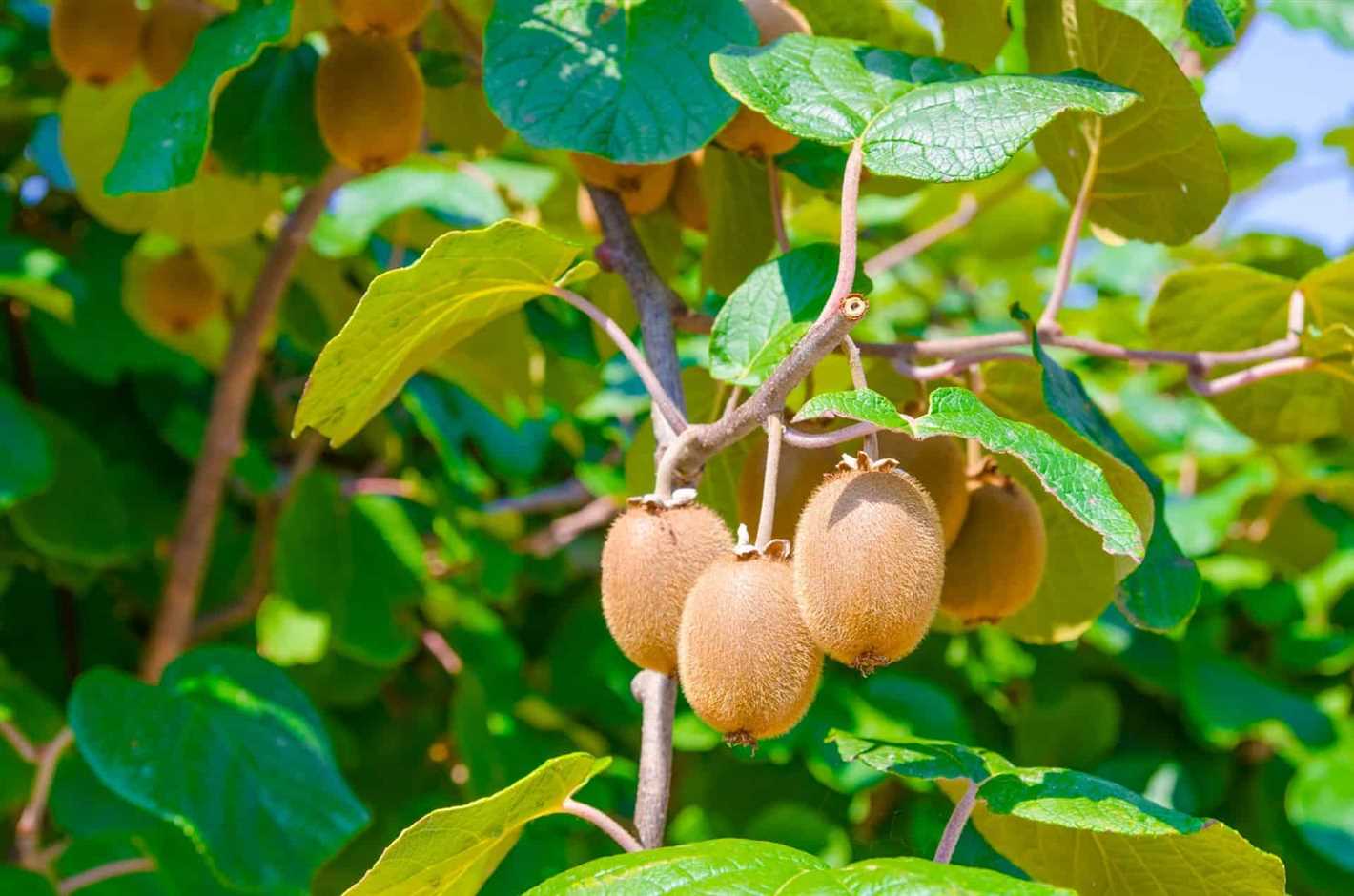
Most fruiting vine plants benefit from vertical trellising, which provides support for their growth and helps maximize sunlight exposure. A trellis should be sturdy enough to hold the weight of the vines, fruits, and foliage. Consider using materials like wood, metal, or wire, depending on the plant’s growth habit and the desired aesthetics in your garden.
It is essential to set up the trellis before planting the vine to avoid damaging the plant’s delicate roots later on. Install the trellis securely in the ground or against a wall, making sure it is tall enough to accommodate the vine’s maximum height.
3. Horizontal trellising
Some fruiting vine plants, such as melons or cucumbers, benefit from horizontal trellising. This involves training the vine to grow along a horizontal support system, such as a fence or stakes. Horizontal trellising helps keep the fruits off the ground, reducing the risk of rotting, pests, and diseases.
4. Training and pruning
Proper training and pruning techniques are crucial for maintaining the health and productivity of fruiting vine plants. Regularly remove any dead, damaged, or diseased parts of the vine to prevent the spread of infections. Train the vines to grow along the trellis or support system, gently tying them with twine or plant clips as needed.
5. Consider the plant’s growth habit
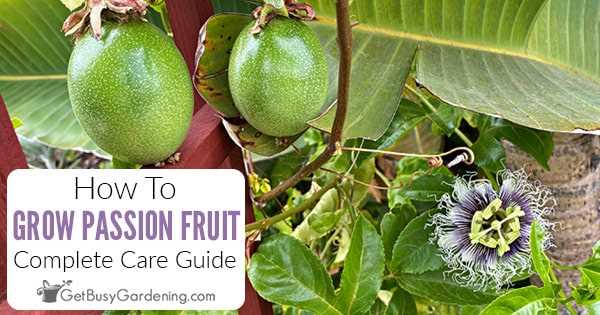
When choosing a trellis or support system for your fruiting vine plant, consider its growth habit. Different plant varieties have different growth patterns – some may have long, twining vines, while others may have shorter, bushier growth. Understanding the plant’s growth habit will help you choose the appropriate trellis design and determine the spacing requirements.
By considering the spacing and trellising needs of your fruiting vine plants, you can create an optimal environment for their growth and maximize your harvest. Remember to research the specific requirements for the variety you choose and make necessary adjustments to ensure your plants thrive.
How to maintain and care for fruiting vine plants
- Pruning: Regular pruning is essential for maintaining the health and productivity of fruiting vine plants. Prune in late winter or early spring before the vine starts to grow for the season. Remove any dead or damaged branches, as well as any crossing or crowded branches.
- Training: Properly train the vine by tying it to a trellis or support structure. This will help the plant grow in a desired direction and make it easier to harvest the fruits. Train the vine in a way that allows maximum sunlight exposure for optimal fruit production.
- Watering: Fruit vine plants typically require deep and regular watering, especially during dry periods. Water the plants at the base to avoid wetting the leaves, as this can lead to disease. Provide enough water to keep the soil consistently moist, but not waterlogged.
- Fertilizing: Fruiting vines benefit from regular fertilization to promote healthy growth and abundant fruit production. Use a balanced fertilizer with equal parts nitrogen, phosphorus, and potassium. Apply the fertilizer in early spring and again in midsummer, following the manufacturer’s instructions.
- Pest and disease control: Keep an eye out for common pests and diseases that can affect fruiting vine plants, such as aphids, powdery mildew, and fungal infections. Monitor the plants regularly and take appropriate measures to control and prevent infestations or infections, such as using insecticidal soap or applying fungicides.
- Harvesting: Harvest the fruits at the appropriate stage of ripeness, as this will vary depending on the specific vine plant. Be gentle when harvesting to avoid damaging the vines or the fruits. Regularly pick the fruits to encourage continuous production throughout the growing season.
- Winter care: Take precautions to protect the vine plants during the winter months. Mulch the base of the plants with a layer of organic material to insulate the roots and retain moisture. If the winters are severe in your area, consider covering the plants with burlap or using a frost blanket to shield them from freezing temperatures.
By following these maintenance tips, you can ensure that your fruiting vine plants remain healthy and productive year after year. With proper care and attention, you’ll be able to enjoy a bountiful harvest of delicious fruits from your vines.
Common pests and diseases that affect fruiting vines
Fruiting vines are susceptible to a variety of pests and diseases that can impact their health and productivity. It is important for gardeners to be aware of these common issues and take preventative measures to protect their plants. Here are some of the most common pests and diseases that affect fruiting vines:
Pests
- Aphids: These small insects feed on the sap of plants, causing leaves to curl and distort. They can also transmit viral diseases.
- Spider mites: These tiny pests suck the sap out of leaves, causing them to turn yellow and fall off. They can also create fine webs on the plants.
- Fruit flies: These pests lay eggs on ripening fruits, causing them to rot and become inedible. Fruit fly larvae feed on the fruit, further damaging it.
- Caterpillars: Caterpillars can eat through leaves and fruits, causing significant damage to the plant. Some common caterpillar pests include grape leafrollers and grape berry moth.
- Snails and slugs: These slimy pests feed on leaves and fruits, leaving behind a trail of mucous. They can cause extensive damage to young plants.
Diseases
- Powdery mildew: This fungal infection appears as a white powdery coating on leaves and fruit. It can affect the plant’s ability to photosynthesize and reduce fruit quality.
- Downy mildew: This fungal disease causes yellow spots on leaves, which eventually turn brown and fall off. It can also infect fruit, causing it to rot.
- Anthracnose: This fungal infection causes dark, sunken lesions on leaves, stems, and fruit. It can lead to fruit rot and cankers on the plant.
- Bacterial canker: This bacterial disease causes cankers on the plant’s stems and branches. It can lead to reduced fruit production and plant decline.
- Root rot: This fungal disease affects the roots of the plant, causing them to rot and inhibit nutrient uptake. It can lead to wilted foliage and stunted growth.
To prevent and manage these pests and diseases, it is important to practice good garden hygiene, such as removing diseased plant material, providing adequate air circulation, and avoiding overwatering. Using organic pest control methods, such as insecticidal soaps and neem oil, can also help control pest populations. Additionally, selecting disease-resistant varieties of fruiting vines can help minimize the risk of infection.
Harvesting and enjoying the fruits of your labor
Once your fruiting vine has matured and begun producing fruits, it’s time to enjoy the delicious rewards of your hard work. Here are some tips for harvesting and enjoying the fruits:
- Timing: Harvest your fruits when they are fully ripe. This is when they will have the best flavor and texture. Each type of fruiting vine may have different signs to look for, such as color change or firmness, to indicate ripeness.
- Harvesting: Gently twist or cut the fruits from the vine, being careful not to damage the plant. Use pruning shears or a sharp knife for fruits that are difficult to detach by hand.
- Storing: If you can’t enjoy the fruits immediately, store them in a cool, dry place. Some fruits may also need to be refrigerated to maintain freshness. Check the specific guidelines for the type of fruit you are harvesting.
- Preparing: Wash the fruits thoroughly before consumption. Depending on the fruit, you may need to peel or remove any unwanted parts before eating. Some fruits can be eaten fresh, while others may be used in recipes or processed for preservation.
- Enjoying: There are endless ways to savor the fruits of your labor. Eat them as a healthy snack, use them in smoothies or salads, bake them into pies or desserts, or preserve them as jams and jellies. Experiment with different recipes to fully appreciate the flavors of your harvest.
Remember, the joy of growing your own fruiting vine doesn’t end with the harvest. It’s a continuous cycle of planting, nurturing, and enjoying the fruits of your labor. So savor every bite and share the deliciousness with your loved ones!
Question-answer:
What are some factors to consider when selecting a fruiting vine?
When selecting a fruiting vine, there are several factors to consider. First, you should consider the climate and growing conditions in your area, as different fruiting vines thrive in different climates. Additionally, you should consider the amount of space you have available, as some fruiting vines can grow quite large. You should also consider the type of fruit that you prefer, as different fruiting vines produce different types of fruit. Finally, you should consider your level of gardening experience and the amount of maintenance required for different fruiting vines.
What are some popular fruiting vines that are easy to grow for beginners?
There are several fruiting vines that are easy to grow for beginners. One popular option is the grapevine, which is relatively hardy and can produce a large amount of fruit. Another option is the passion fruit vine, which is known for its beautiful flowers and delicious fruit. The blackberry vine is also a good choice for beginners, as it requires minimal maintenance and produces sweet berries. Additionally, the kiwi vine and the raspberry vine are both relatively easy to grow and can produce a bountiful harvest.
What are some fruiting vines that can thrive in a hot climate?
There are several fruiting vines that can thrive in a hot climate. One option is the muscadine grapevine, which is native to the southeastern United States and is known for its heat tolerance. The passion fruit vine is another good choice for a hot climate, as it prefers warm temperatures and can withstand high heat. The fig vine is also a good option for a hot climate, as it is drought-tolerant and can thrive in sunny, dry conditions. Additionally, the pomegranate vine and the dragon fruit vine can both tolerate hot temperatures and produce delicious fruit.
What are some fruiting vines that can be grown in small spaces, such as a balcony or patio?
If you have limited space, there are still several fruiting vines that you can grow. One option is the grapevine, which can be trained to grow vertically on a trellis or arbor. The strawberry vine is another good choice for small spaces, as it can be grown in hanging baskets or containers. The dwarf kiwi vine is also a great option for balconies or patios, as it can be grown in a large pot and produces small, tasty kiwi fruit. Additionally, the raspberry vine and the blackberry vine can both be grown in containers and require minimal space.
What are some fruiting vines that produce fruit all year round?
While most fruiting vines have a specific fruiting season, there are a few options that can produce fruit all year round. One such option is the passion fruit vine, which can produce fruit year-round in tropical climates. The everbearing raspberry vine is another good choice, as it can produce fruit from summer through fall. The strawberry vine is also known for its continuous fruiting, producing berries throughout the growing season. Additionally, the fig vine can have multiple fruiting periods, producing fruit in the spring and fall.
What are some fruiting vines that are resistant to pests and diseases?
When selecting a fruiting vine, it is important to consider its resistance to pests and diseases. Some options that are known for their pest and disease resistance include the muscadine grapevine, which is resistant to many common grape diseases. The blackberry vine is also relatively resistant to pests and diseases, making it a low-maintenance choice. The kiwi vine is known for its resistance to many common kiwi pests and diseases. Additionally, the fig vine and the passion fruit vine are both relatively pest and disease resistant.
What are some fruiting vines that can be grown indoors?
If you want to grow a fruiting vine indoors, there are several options to choose from. One popular choice is the dwarf citrus tree, which can be grown in a pot and produces small fruits such as lemons, limes, or oranges. The strawberry vine is another good option for indoor growing, as it can be grown in a hanging basket or container. The dwarf banana plant is also a great choice for indoor cultivation, as it can tolerate indoor conditions and produce small, sweet bananas. Additionally, the grapevine can be grown indoors if provided with enough sunlight and room to grow.







